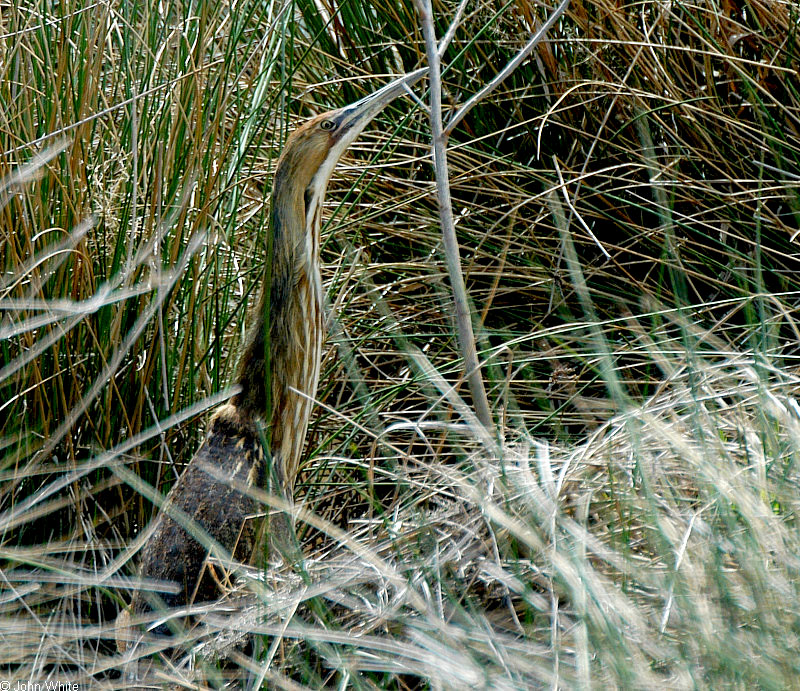
| Photo © John White |
American Bittern The booming call of the American Bittern usually betrays its presence long before it is seen. This relatively rare and unsociable heron-like bird is found in wetlands where it hides in the cat-tails and bulrushes, standing stock still with its gray bill vertical to blend in with the background. Its curiously light and dark brown striped plumage also helps to make the bittern hard to spot. At dawn and dusk, however, the bittern can be viewed walking deliberately on the edge of the water, or standing alertly waiting for prey to pass, before spearing the unfortunate victim – usually fish, but also amphibians or even small mammals – with its long, sharp bill. The bittern stands about 24 inches tall and has up to a 48 inch wingspan. The dark and light striping on its back and wings contrasts with its white and brown underside, giving an overall effect of shading and breaking the bird’s outline in the reeds. Adding to the impression are two black patches extending down its neck from the bittern’s eyes. The bittern’s small yellow and black eyes are set low on its head to give it a good defensive view when in hiding. In flight, the bittern’s pointed wings beat in quick, deliberate strokes and it flies in direct fashion to its destination. Bitterns prefer their solitude but come together to mate and rear 2-6 young every year. Their courtship is extraordinarily stylized given their otherwise calculating nature with both birds participating in complex displays. The bittern’s nest is made from local reed material and grasses and is difficult to spot too. The male guards while the female lays the eggs and rears the young birds for the six week period before they leave the nest to begin their lonely lives. The loss of habitat and pollution has affected the bittern’s numbers, but their status is partly conjectural because of difficulty in finding them to make a proper count. Read more... |





